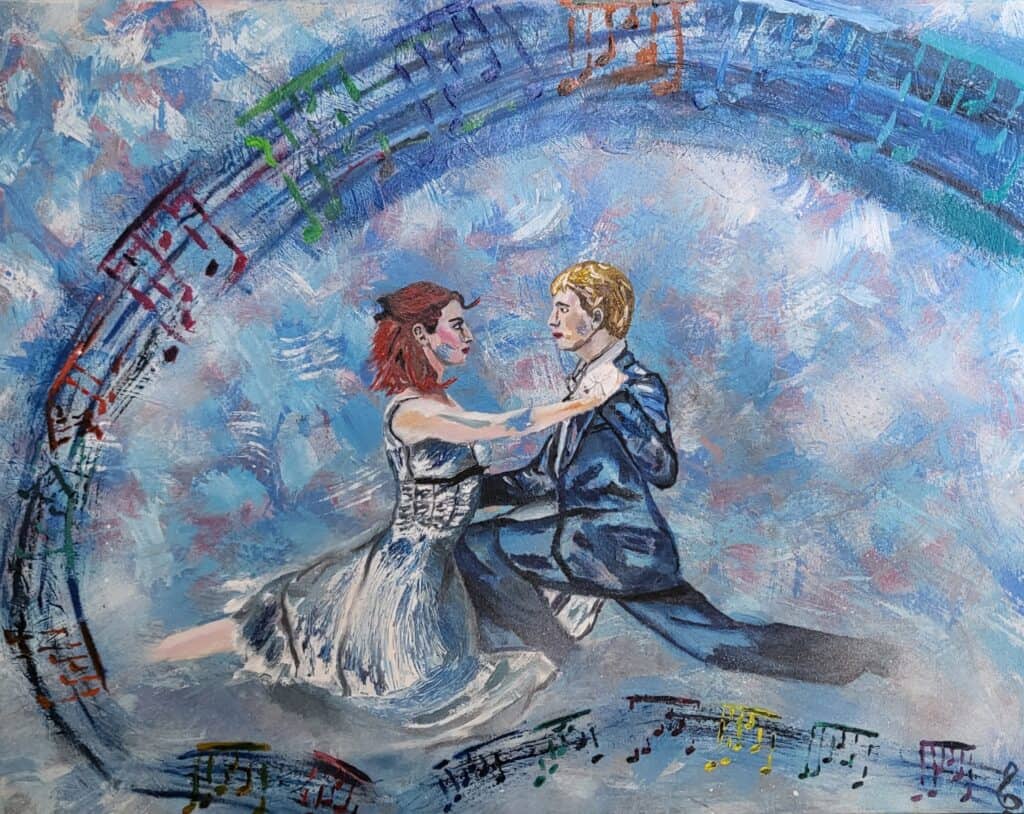By Nathan Cook

As an artist, much of my work is inspired by my everyday environment. This could range between items found around my home or current events, music, etc. I then attempt to translate those objects or ideals from my chosen media for a unique experience.
It’s my goal, if only for a moment, that my artwork will give the viewer pause and allow the piece to provoke careful consideration. My art has a story to tell. And maybe the possibility to elicit an emotional response everyone can identify with awaiting beneath its surface.
I was born in Arkansas, and later the U.S. Army took me to many places to encounter a plethora of experiences. UAMS was paramount in treating me and others in the post-war veteran community—which extends to their collaboration efforts with the Little Rock VA services.
Reuniting with my family on my return to Arkansas in 2011 also initiated an inward journey reconnecting with my childhood. I came from a family of artists. Growing up, my grandmother and I would paint together. Her hand would clasp mine as a young child, directing brush strokes to provide a sense of visual development on canvas.
As a child, I ventured through my grandparents’ house and looked at all the paintings. Some were by my grandmother or aunt or reprints from the Renaissance. I remembered the ambient sounds from outside making their way through the external walls as I studied those paintings; a random breeze would push against the house, and the jumbled melodies of wind chimes would dance in my ears, accompanied by the music of songbirds: nature and art. I wouldn’t know until later in life the impact art had on my life.In grade school, I was introduced to a new form of art: music. During my artistic journey, music played a profound role in finding inspiration. I began to look at music as if my ears were the paintbrush and my mind the canvas, slowly revealing a beautiful and intricate picture. I also learned to play three types of saxophones and the electric guitar. I attended every school competition and camp in Arkansas to be the best I could be. Later, an idea came to me. What if I could somehow translate emotions and images that came to mind when listening to music into a painting?
I pursued art professionally in 2018. My grandmother, my inspiration for artistic endeavors, has since developed dementia. My family and I confidently chose UAMS to play a role in my grandmother’s healthcare. In one of her brief states of cognition, she gifted me all of her art supplies. The brush hairs from some of the paint brushes were falling out, attributed to the passage of time and those invaluable moments together as grandmother and grandson. Armed with her tools and music, I got to work.
People may not know that all art forms create inspiration and influence other artists. This can be in literature, music, or something visual. I consider this a form of feedback loop, if you will. In 2018, I found myself enraptured by the music Airborne Dances by symphonic composer Oliver Davis. I was so captivated that it inspired me to paint, Airborne, an attempt to capture the musical movements of the concerto.
I wrote Davis to extend gratitude which led to a professional acquaintanceship. The visual sense joins the auditory sense. Oliver Davis’ future musical works would continue to play a role in inspiring my art.
In 2020, the COVID-19 pandemic was in full swing and had a devastating death toll. Despite the virus on the rise, it didn’t deter Davis from composing a new album. He embarked on a task to record the album, Solace. He assembled musicians worldwide, aided by remote technology, to complete the necessary recordings for his new album.
Like those in the medical professions tirelessly working to aid those with the Coronavirus, the international artistic community did its part to combat mass depression thriving in the wake of the virus by creating music. The term ‘solace’ means to comfort or console in a time of sadness or distress. After listening to the new album, I felt driven to create a painting that portrayed happiness.With this in mind, I painted The Dancers. It was later nicknamed Ghosts Dancing amongst some viewers, as it was noted that the dancers seemed to develop from the background. The painting represents happiness in an era of despair during COVID and the Russo-Ukrainian War. Where something as simple as human touch was now considered forbidden, I placed my thumbprint into the oil paint, where the dancer’s hands joined, emphasizing human touch. Sometimes we need a reminder to be thankful for those happy moments when we danced, rejoiced, and touched; tomorrow, we know not what awaits us. The painting found a home with Oliver Davis in the U.K.
